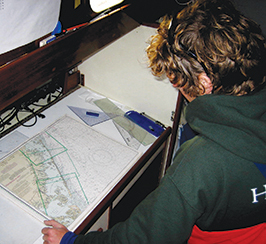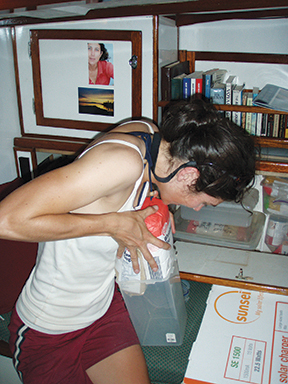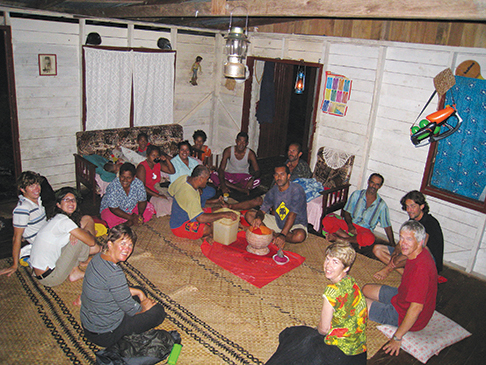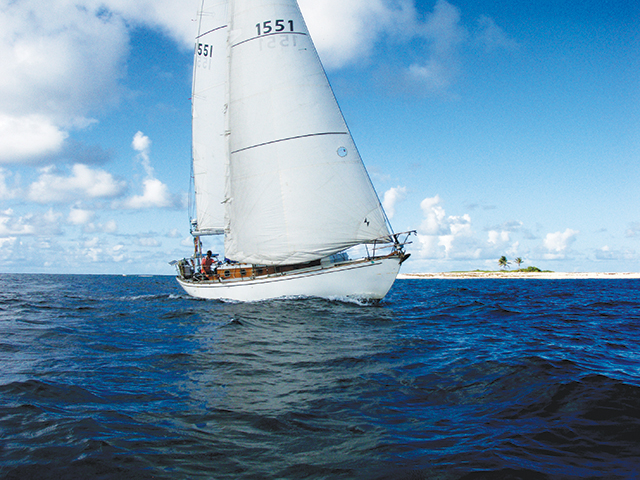(published April 2014)
In the War of 1812 my great-great-great grandfather was taken prisoner by the British. He was the captain of a merchant sailing vessel, and had been since the age of 18. He was in command not only of a wooden ship capable of crossing the Atlantic, but also of all her men. He had to be master of coastal and celestial navigation, maintaining and provisioning for a large vessel, and keeping his crew content and disciplined. Then he had his cargo; not only did he have to sail safely, he had to turn a profit. That is a lot of responsibility for an 18-year-old.
Nowadays it seems almost incredible: about a third of American 18-year-olds are freshmen in colleges where custodians clean their common spaces and a dining hall staff cooks their meals. They are answerable for their studies, and they may have jobs—almost certainly they have summer jobs—but this doesn’t come close to the kind of responsibility people like my ancestor assumed. We might have passed the era of whalers and tall ships but the sea is still a stern and rewarding teacher, many of whose lessons can’t be learned in a university.
The sea and college need not be an either/or proposition. I was fortunate enough to experience both: three and a half years studying for a BA and four years sailing around the world with my husband (then boyfriend) on our 38 foot classic cutter Heretic. Obtaining my degree from Yale—I graduated in December 2008—was a rigorous process, especially once I decided to accelerate it by one semester. I learned a lot, not only about the subjects I studied, but also about my capacity for intellectual work and time management. I also made lasting friendships. I value my experience there and in today’s world I cannot deny the immense advantages to holding a degree.
AN UNCONVENTIONAL EDUCATION

Sailing around the planet, though, was how I really grew up. I was 20—only two years older than my ancestor—when I set off with Seth Leonard, whom I married five years later. I was supposed to be going back to Yale that fall of 2006 for my junior year. But I had cherished dreams of crossing oceans ever since I had learned to sail at age seven, so I didn’t think twice about taking a year’s leave of absence. Seth is three years older than me and had already finished college and was planning a two-year global circumnavigation from Maine to Panama, South Africa and back to Maine. In the end two years stretched into four, with breaks in New Zealand and Australia so I could return to Yale to finish my degree.
I had thought I was an adult at Yale, but suddenly I was accountable for a small sailing vessel. My every action had a real consequence. If I neglected to stand watch, say, en route to the Panama Canal, I could have hit a ship. If I screwed up my navigation in, say, Fiji, we might have lost Heretic on a reef like the two boats which did just that while we were cruising there. These were hardly the same mistakes as neglecting to attend an art history lecture.

A successful voyage requires that the boat be properly maintained, no small task for young people on a tight budget like Seth and me. The yacht has to be well provisioned for the duration of an offshore passage, which can easily be prolonged to twice or three times its expected length when, as happened to us, a mechanical failure leaves you drifting in a dead calm for a week. The crew has to keep a vigilant watch, which can be cold, wet and exceedingly uncomfortable at 2 am in 50 knots of wind and 30 foot breaking seas off the southern tip of Africa. Surmounting these challenges, however, teaches important lessons of how to learn, the value of delayed gratification, and a strong appreciation for the world in which we live.
LESSONS LEARNED
In many ways, my liberal arts education did teach me how to think and learn. But our 40-year-old cutter Heretic gave me very practical lessons in Socrates’ adage that wisdom is knowing how little you know. Seth and I learned to consult manuals and more experienced cruisers about issues like taking the cylinder head off the old engine when it seized in Australia. During the 27 days Seth and I spent offshore crossing the Pacific, trial and error taught us a lot about the physics of balancing the boat—her center of effort versus her center of lateral resistance—in order to make Heretic’s windvane steer properly. Watching the clouds, the swells, and the barometer, and comparing our ideas with GRIB files taught us how to read the weather. Having two friends aboard for the first couple of months down the East Coast of America taught us about the dangers and unhappiness of an ill-suited crew. We learned to deal with bureaucracies of all kinds by clearing customs and immigration in 23 countries and territories, a skill that would undoubtedly make a good addition to a business school curriculum.
Voyaging under sail is the very essence of delayed gratification. You reach your destination slowly and with a lot of effort. The work begins well before you raise sail, with the planning and preparation. To decide on a route, you must take into consideration the amount of time allotted for the voyage and world weather patterns including cyclone seasons. Provisioning demands equal thought, everything from toilet paper to spaghetti for the whole crew, charts and safety gear, books and sheets and towels, spare parts for the engine, the rig, and the wiring. Seth and I provisioned Heretic for a year at a time, supplementing our supplies with fresh vegetables in our ports of call.
Depending on the age and condition of the boat and what you will require of her, preparing her can be a massive project. Seth and I restored Heretic from a leaky, almost unseaworthy craft to a vessel capable of a circumnavigation. We didn’t do all of it before departing, though, as Heretic’s restoration was an ongoing affair that we euphemistically called “maintenance.” We taught ourselves a lot, and kept within our budget, by doing all the labor ourselves: rewiring and plumbing, installing a “new” 20-year-old engine and hand-me-down electronics and winches, and spending six weeks in Tyvek suits and respirators repairing osmosis in the old fiberglass hull. Launching Heretic again after that project was a wonderful moment, more so because our aching muscles told us just how much work had gone into making it happen.
Keeping watch at all hours and in all weather can also teach you the sweetness of delayed gratification. There’s not much that compares with raising the lush mountains of Fiji after hammering through a low pressure system north of New Zealand for five days. But watches offshore can also be some of the best means for understanding and appreciating the world around you. I loved to observe the birds, how the storm petrels fluttered just above the surface to scoop up krill, how the albatrosses glided high overhead, how the boobies dove like stones after their prey. I learned to distinguish between types of dolphins and the spouts of different whales.

Each time we reached a port, the people and places we encountered made memorable impressions. A Fijian village welcomed us as family, showing us how to harvest taro and dry copra, and hosting us to Sunday brunch and a quiet night of kava drinking. We experienced this kind of hospitality almost everywhere: a citrus farmer in the Marquesas, the owners of a sheep station in New Zealand, the manager of a restaurant on Rodrigues Island in the Indian Ocean, a Zulu anti-poaching ranger in South Africa, the baker on St. Helena Island, a dentist on Martinique.
These are experiences that can’t be found in college. No matter how diverse the admissions offices try to make their universities, it isn’t a substitute for actually seeing the world. And voyaging under sail is one of the most cost effective ways of not only visiting, but living in, a great many places. The cost of purchasing a boat may prove a substantial barrier to an ambitious young sailor because a small but serviceable boat, needing a bit of work but safe if properly cared for, will cost around $35,000 to $40,000. That’s a large sum of money, but it’s less than a year at most private colleges. Once the boat is purchased, living aboard can be amazingly cheap as long as you are willing to do the majority of the maintenance and repairs yourself. Maintenance and boat parts will be the largest expense for the owner of an old yacht—purchasing the best-kept boat you can afford will save money in the long run—but with frugality and a little luck, a four year circumnavigation can cost less than four years in college. And it’s usually possible to find some work along the way.
Voyaging is not necessarily a substitute for a classroom education, where one is taught skills and subjects that can’t be found at sea. Unfortunately, a university education is all too often wasted in parties and “gut” classes that require the least effort. In that case, a small boat and a month at sea to think about what really matters in life may be a far better investment of time and money.
Ellen Massey Leonard completed a 32,000-mile westward circumnavigation via the Cape of Good Hope in 2010 at age 24. She and her husband Seth made the voyage aboard Heretic, their former 38-foot cutter. They now split their time between working in landlocked Switzerland, where Ellen is writing a book about their circumnavigation, and their new-to-them 40-foot cutter Celeste. They are currently undertaking a cruise to Alaska and the Arctic.

















